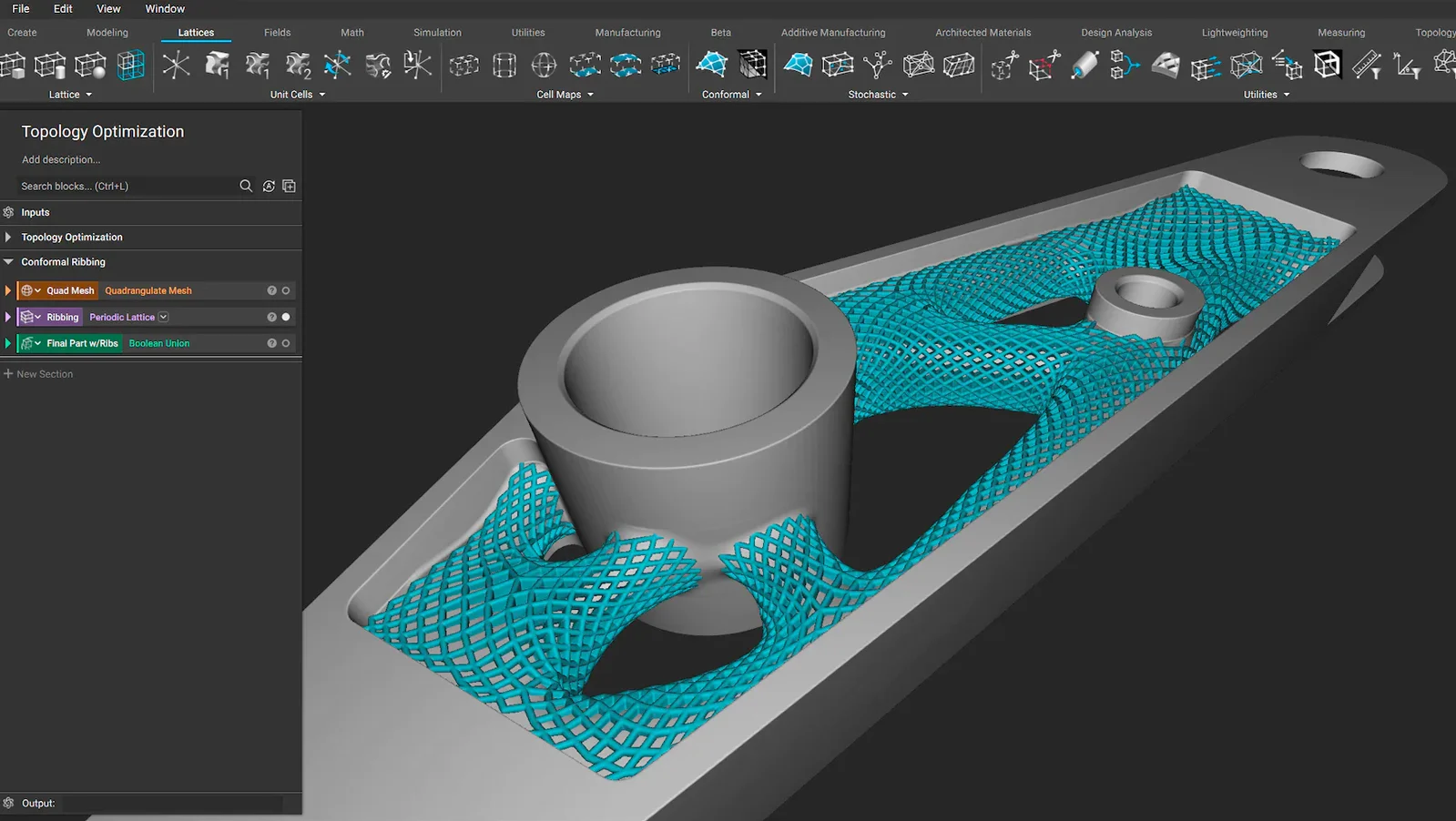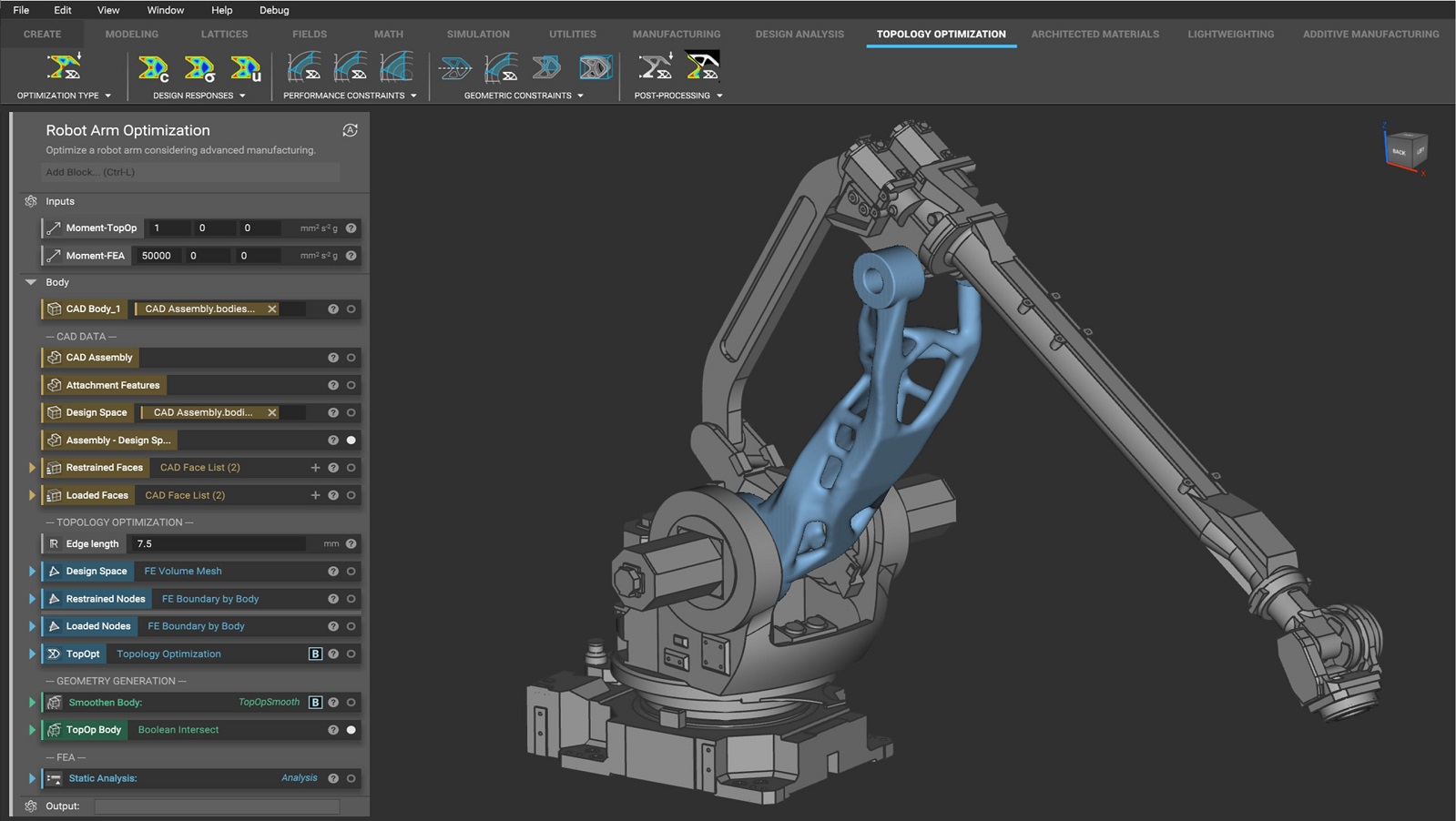Free Download nTopology 4 full version standalone offline installer for Windows. At the core of this lies our implicit modeling engine.
nTopology Overview
In implicit modeling, every solid body is described by a single mathematical equation. This unbreakable geometry engine enables lightning-fast design iterations and eliminates design bottlenecks in advanced product development. No “black boxes. ” ntopology gives you complete control over every aspect of your productive workflows, optimization processes, and outputs. Create reusable workflows that are tailored to the unique requirements of your application. Control designs at every point in space using simulation results, test data, engineering formulas, and Field-Driven Design. Realize ROI beyond part performance. No one knows your process and your industry like you. This was built from the ground up to enable you to create custom applications that address your specific needs and transform how you develop innovative products.
Features
- Hands-on technical training and onboarding
- Support from the top team to help you set up your workflows
- Training and nTop Lives covering new applications
- Preconfigured workflows to jump-start your projects
- Extensive documentation and support
Discover the Cutting-Edge Capabilities of nTopology
As of my last knowledge update in November 2, 2023, nTopology is a software company that focuses on generative design and advanced engineering capabilities. Please note that the capabilities of nTopology software may have evolved since then. For the latest and most accurate information, I recommend checking the official nTopology website or contacting the company directly. Here are some cutting-edge capabilities that were associated with nTopology:
- Generative Design:
- nTopology provides advanced generative design capabilities, allowing engineers to explore and optimize complex designs based on specified criteria and constraints.
- Topological Optimization:
- The software supports topological optimization techniques, enabling users to create structures with optimized material distribution for enhanced performance and efficiency.
- Lattice Structures:
- nTopology allows the creation of intricate lattice structures, which can be customized for specific applications. Lattices are known for their lightweight and high-strength properties.
- Complex Geometry Modeling:
- Engineers can model highly complex geometries using nTopology, allowing for the creation of shapes and structures that may be challenging or impossible with traditional design methods.
- Simulation Integration:
- Integration with simulation tools enables users to perform virtual testing and analysis of designs. This helps in validating and refining designs before physical prototypes are created.
- Additive Manufacturing Optimization:
- nTopology is often used for optimizing designs for additive manufacturing processes. Users can generate supports, control build orientation, and ensure optimal part performance for 3D printing.
- Advanced Material Handling:
- The software may offer advanced features for handling and defining materials in a detailed manner. This includes the ability to specify material properties, simulate material behavior, and analyze material interactions within a design.
- Parametric Design:
- Parametric design capabilities in nTopology allow users to create design parameters that can be easily adjusted, facilitating rapid iteration and exploration of design alternatives.
- Workflow Automation:
- Automation features streamline repetitive tasks in the design process, improving efficiency and allowing engineers to focus on higher-level decision-making.
- Collaborative Design:
- nTopology may support collaborative design workflows, enabling multiple team members to work on a project simultaneously and efficiently share and review design iterations.
- Integration with CAD Systems:
- Integration with existing Computer-Aided Design (CAD) systems allows for a seamless workflow between nTopology and other design tools.
- Scripting and Customization:
- Advanced users can take advantage of scripting capabilities to customize and extend the functionality of nTopology, tailoring it to specific engineering requirements.
- Version Control:
- Some versions of nTopology may offer version control features, allowing users to track changes, compare iterations, and maintain a clear record of design evolution.
- AI and Machine Learning Integration:
- Depending on the version, nTopology may incorporate artificial intelligence (AI) and machine learning (ML) elements to assist in design optimization and decision-making.
Unlocking the Potential: nTopology
Familiarize Yourself with Generative Design Concepts: Gain a solid understanding of generative design principles, including the optimization of designs based on specified parameters and constraints. Explore Topological Optimization: Experiment with topological optimization features to create structures with optimized material distribution. Understand how this process can lead to lightweight and high-strength designs. Master Lattice Design: Dive into lattice design capabilities. Explore and customize lattice structures to achieve desired material properties, such as strength, flexibility, or weight reduction. Complex Geometry Modeling: Take advantage of nTopology’s capabilities for modeling complex geometries. Use the software to create intricate shapes and structures that go beyond the limitations of traditional design tools. Simulation and Analysis: Integrate simulation tools to perform virtual testing and analysis. Understand how changes in design parameters impact the performance and behavior of your designs. Optimize for Additive Manufacturing: Utilize nTopology to optimize designs specifically for additive manufacturing processes. Consider factors such as build orientation, support generation, and overall manufacturability. Parametric Design for Iteration: Implement parametric design to create adjustable parameters within your models. This allows for rapid iteration and exploration of design alternatives without starting from scratch. Automate Repetitive Tasks: Take advantage of workflow automation features to streamline repetitive tasks. Automate processes to enhance efficiency and reduce the time spent on manual operations. Collaborative Workflows: Explore and implement collaborative workflows within nTopology. Leverage features that enable multiple team members to work on a project simultaneously, facilitating efficient communication and design iteration. Integrate with CAD Systems: Integrate nTopology with your existing CAD systems to create a seamless workflow. Understand how to transfer data between nTopology and other design tools effectively. Scripting and Customization: If you have advanced programming skills, explore scripting capabilities for customization. Tailor nTopology to meet specific engineering requirements through scripting. Version Control Practices: Implement version control practices within nTopology. Track changes, compare iterations, and maintain a clear record of design evolution, especially in collaborative environments. Stay Informed about Updates: Regularly check for updates and new releases from nTopology. Stay informed about the latest features, enhancements, and bug fixes to ensure you are working with the most advanced version of the software. Explore AI and Machine Learning Integration: If applicable, explore features related to artificial intelligence (AI) and machine learning (ML). Understand how these technologies can assist in design optimization and decision-making.
Technical Details
Software Name: nTopology for windows
Software File Name: nTopology-4.20.2.rar
Software Version: 4.20.2
Size of File: 1.55 GB
Creators: nTopology
Language: English
Mode of Operation: Offline (Once installed, you may use it without an internet connection.)
System Specifications and Technical Information
- Required is a multicore CPU with 64-bit capability.
- Microsoft Windows 8.1 (64-bit), Windows 10 (64-bit), or Windows 7 with Service Pack 1
- Enables Windows 10 Creator Edition support
- 4 GB of free hard disc space is needed for installation; flash storage devices cannot be installed on removable media.
- 1024 x 768 screen (1280 x 800 preferred)
- Preferable: GPU card advised by Adobe for GPU-accelerated performance
Download nTopology Latest Version Free
To get the nTopology 4 free setup, click the icon below. nTopology 4 for Windows is fully installed offline, and it works flawlessly with both x86 and x64 architectures.


